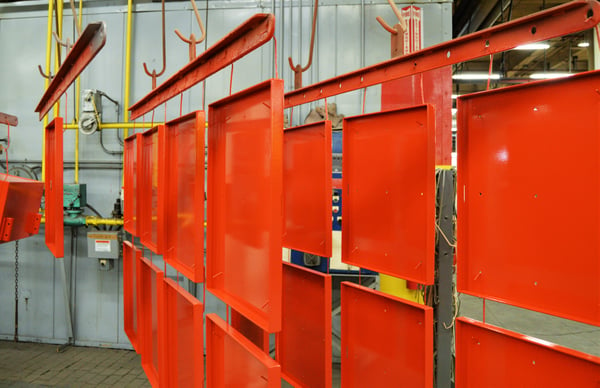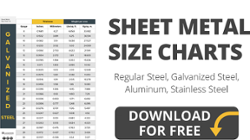 Deciding which components will need to be fabricated for industrial enclosures is a large consideration that may ultimately affect pricing, quality, time, and design. Some parts can be machined, while others will have to be fabricated.
Deciding which components will need to be fabricated for industrial enclosures is a large consideration that may ultimately affect pricing, quality, time, and design. Some parts can be machined, while others will have to be fabricated.
To produce your project efficiently, use these comparisons to decide which process is ideal.
Metal Fabrication and Metal Stamping
To understand whether metal fabricating or metal stamping is best for your industrial enclosures, it's helpful to review the components:
Metal Stamping
Metal stamping uses bending, punching, or flanging with a stamping or machine press. The stamping can be done in separate parts or through multiple stages.
Metal Fabrication
With metal fabrication, the metal is cut, drilled or welded using CNC cutters. Other aspects include folding by striking or with press brakes or folders, and tapping or thread rolling with a tapping machine. With final assembly, the parts can be welded together, riveted, or held with fasteners or crimped seams.
Stamping and Precision Pressing
Advantages
Metal stamping can offer a big range of precision components. Stamping and pressing are cost-effective, and you can produce mid-range production runs. With complex products, precision stamping is fast and cost-effective, especially for mid-to-high-production volumes.
While it can be used with manual presses, it's best with automated, coil-fed press equipment.
Disadvantages
Because metal stamping is better for longer runs, it may be too expensive for short production runs. Longer lead times may also be necessary. You may find that this process is inflexible given the time it takes to make any design changes when tools have already been produced.
Metal Fabrication
Offering more flexibility and agility, metal fabrication has cost advantages and can reduce production lead times.
Advantages
- With precision fabrication, there are more ways to offer customizations, and this can in turn reduce lead times.
- Increased flexibility helps to change designs, making this a cost-efficient option.
- Cutting techniques include laser cutting or auto-feed saws.
- Because of the CNC benefits, there's more consistency and accuracy with components.
- With production efficiencies for exacting surfaces, machining is more efficient, whether it's through CNC machining, lathes or other machine tooling devices.
Disadvantages
- This may be a more labor-intensive process, affecting labor costs.
- Details can slow down production times if there are odd shapes or complex parts.
- When compared to stamping dies, consistency may prove challenging.
Deciding on the Best Materials
Because manufacturing jobs often require short production times, time to market and costs can be factors. Whether you go with metal fabrication or metal stamping, there are many facets to consider. Factor in the design of your industrial enclosures, your prototype, and the relevant costs for both short- and long-term production.



